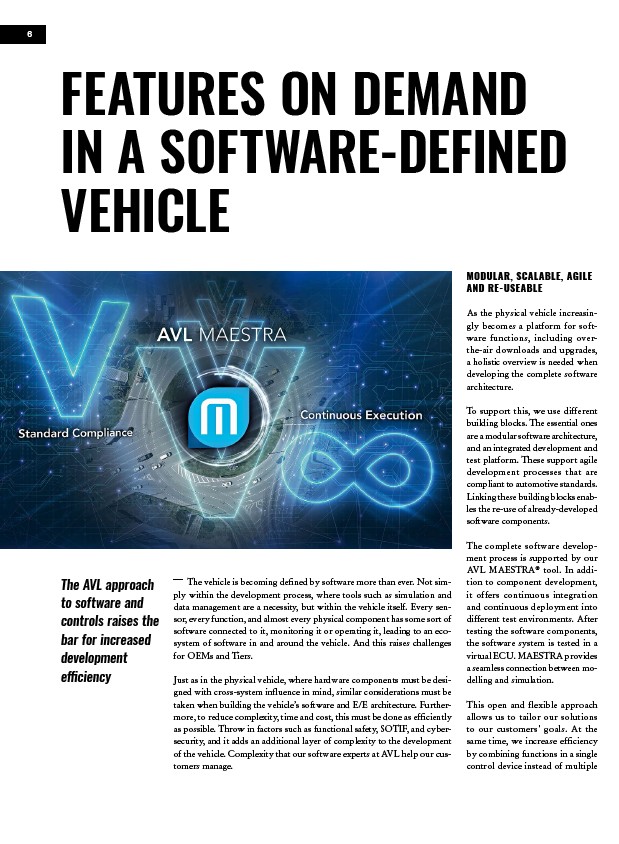
FEATURES ON DEMAND
IN A SOFTWARE-DEFINED
VEHICLE
The vehicle is becoming defined by software more than ever. Not sim-ply
within the development process, where tools such as simulation and
data management are a necessity, but within the vehicle itself. Every sen-sor,
every function, and almost every physical component has some sort of
software connected to it, monitoring it or operating it, leading to an eco-system
of software in and around the vehicle. And this raises challenges
for OEMs and Tiers.
Just as in the physical vehicle, where hardware components must be desi-gned
with cross-system influence in mind, similar considerations must be
taken when building the vehicle’s software and E/E architecture. Further-more,
to reduce complexity, time and cost, this must be done as efficiently
as possible. Throw in factors such as functional safety, SOTIF, and cyber-security,
and it adds an additional layer of complexity to the development
of the vehicle. Complexity that our software experts at AVL help our cus-tomers
manage.
The AVL approach
to software and
controls raises the
bar for increased
development
efficiency
MODULAR, SCALABLE, AGILE
AND RE-USEABLE
As the physical vehicle increasin-gly
becomes a platform for soft-ware
functions, including over-the-
air downloads and upgrades,
a holistic overview is needed when
developing the complete software
architecture.
To support this, we use different
building blocks. The essential ones
are a modular software architecture,
and an integrated development and
test platform. These support agile
development processes that are
compliant to automotive standards.
Linking these building blocks enab-les
the re-use of already-developed
software components.
The complete software develop-ment
process is supported by our
AVL MAESTRA® tool. In addi-tion
to component development,
it offers continuous integration
and continuous deployment into
different test environments. After
testing the software components,
the software system is tested in a
virtual ECU. MAESTRA provides
a seamless connection between mo-delling
and simulation.
This open and flexible approach
allows us to tailor our solutions
to our customers' goals. At the
same time, we increase efficiency
by combining functions in a single
control device instead of multiple
6